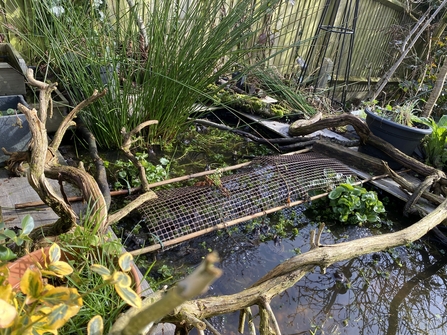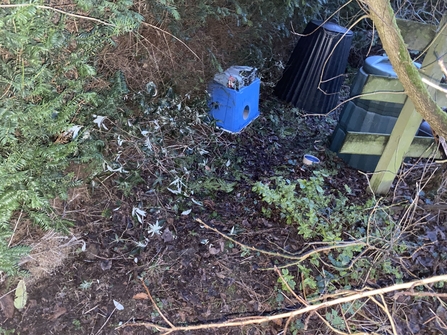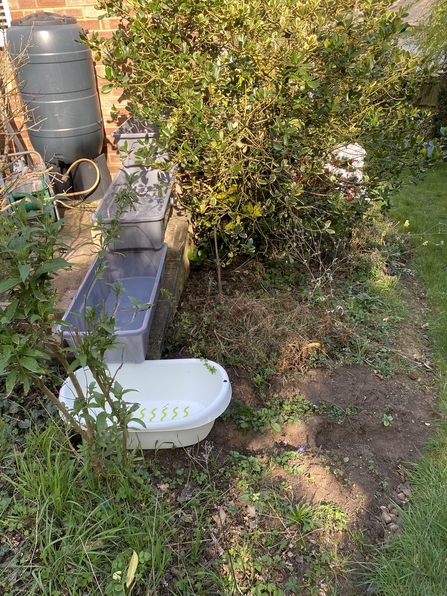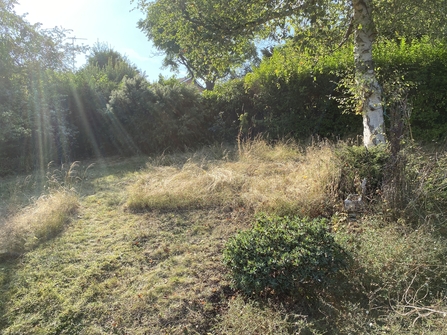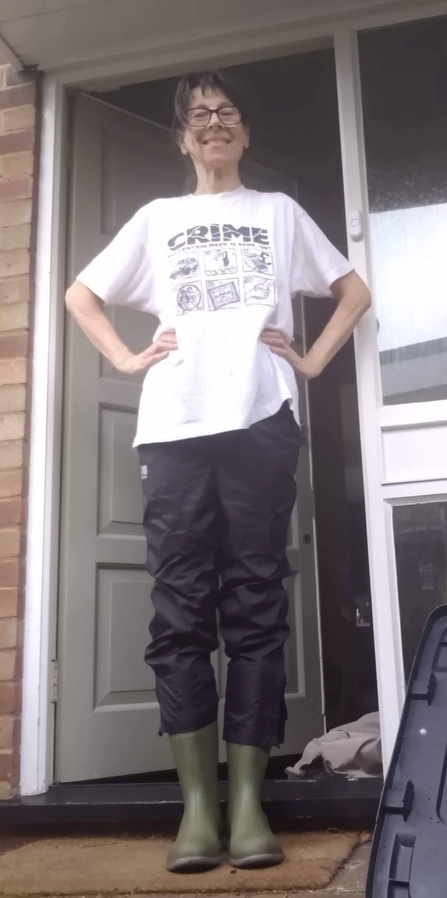Jayne set up Ware Swift Group in 2017, which you can read about in part one of her guest blog ‘Taking Swift Action for Endangered Birds’ but here she gives us a personal insight into her garden, where she helps all wildlife.
A garden for wildlife
At home I practise wildlife-friendly gardening - so I don't use chemicals, I leave areas of the lawn to grow long and I don't put anything in the council's brown bin. All our food waste goes in our compost bin. Branches, twigs and clippings from garden maintenance become either dead hedging or piles here and there, offering homes for invertebrates.
I built a pond a few years back which quickly became a home for many insects and frogs. This year it was jam-packed with frogspawn. I learn a lot from just watching what is in there. I saw a small slug-like creature with a long tail and identified it as a Rat-tailed Maggot, which is the lava of a hoverfly.


